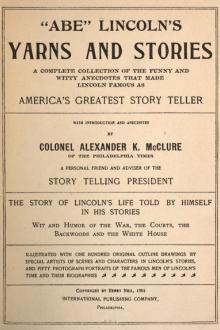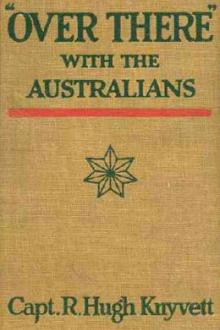A Child's History of England, Charles Dickens [best free novels .txt] 📗

- Author: Charles Dickens
- Performer: -
Book online «A Child's History of England, Charles Dickens [best free novels .txt] 📗». Author Charles Dickens
Jack, who was in two minds about fighting or accepting a pardon, and who indeed did both, saw at last that there was nothing to expect from his men, and that it was very likely some of them would deliver him up and get a reward of a thousand marks, which was offered for his apprehension. So, after they had travelled and quarrelled all the way from Southwark to Blackheath, and from Blackheath to Rochester, he mounted a good horse and galloped away into Sussex. But, there galloped after him, on a better horse, one Alexander Iden, who came up with him, had a hard fight with him, and killed him. Jack’s head was set aloft on London Bridge, with the face looking towards Blackheath, where he had raised his flag; and Alexander Iden got the thousand marks.
It is supposed by some, that the Duke of York, who had been removed from a high post abroad through the Queen’s influence, and sent out of the way, to govern Ireland, was at the bottom of this rising of Jack and his men, because he wanted to trouble the government. He claimed (though not yet publicly) to have a better right to the throne than Henry of Lancaster, as one of the family of the Earl of March, whom Henry the Fourth had set aside. Touching this claim, which, being through female relationship, was not according to the usual descent, it is enough to say that Henry the Fourth was the free choice of the people and the Parliament, and that his family had now reigned undisputed for sixty years. The memory of Henry the Fifth was so famous, and the English people loved it so much, that the Duke of York’s claim would, perhaps, never have been thought of (it would have been so hopeless) but for the unfortunate circumstance of the present King’s being by this time quite an idiot, and the country very ill governed. These two circumstances gave the Duke of York a power he could not otherwise have had.
Whether the Duke knew anything of Jack Cade, or not, he came over from Ireland while Jack’s head was on London Bridge; being secretly advised that the Queen was setting up his enemy, the Duke of Somerset, against him. He went to Westminster, at the head of four thousand men, and on his knees before the King, represented to him the bad state of the country, and petitioned him to summon a Parliament to consider it. This the King promised. When the Parliament was summoned, the Duke of York accused the Duke of Somerset, and the Duke of Somerset accused the Duke of York; and, both in and out of Parliament, the followers of each party were full of violence and hatred towards the other. At length the Duke of York put himself at the head of a large force of his tenants, and, in arms, demanded the reformation of the Government. Being shut out of London, he encamped at Dartford, and the royal army encamped at Blackheath. According as either side triumphed, the Duke of York was arrested, or the Duke of Somerset was arrested.
The trouble ended, for the moment, in the Duke of York renewing his oath of allegiance, and going in peace to one of his own castles.
Half a year afterwards the Queen gave birth to a son, who was very ill received by the people, and not believed to be the son of the King. It shows the Duke of York to have been a moderate man, unwilling to involve England in new troubles, that he did not take advantage of the general discontent at this time, but really acted for the public good. He was made a member of the cabinet, and the King being now so much worse that he could not be carried about and shown to the people with any decency, the duke was made Lord Protector of the kingdom, until the King should recover, or the Prince should come of age. At the same time the Duke of Somerset was committed to the Tower. So, now the Duke of Somerset was down, and the Duke of York was up. By the end of the year, however, the King recovered his memory and some spark of sense; upon which the Queen used her power - which recovered with him - to get the Protector disgraced, and her favourite released. So now the Duke of York was down, and the Duke of Somerset was up.
These ducal ups and downs gradually separated the whole nation into the two parties of York and Lancaster, and led to those terrible civil wars long known as the Wars of the Red and White Roses, because the red rose was the badge of the House of Lancaster, and the white rose was the badge of the House of York.
The Duke of York, joined by some other powerful noblemen of the White Rose party, and leading a small army, met the King with another small army at St. Alban’s, and demanded that the Duke of Somerset should be given up. The poor King, being made to say in answer that he would sooner die, was instantly attacked. The Duke of Somerset was killed, and the King himself was wounded in the neck, and took refuge in the house of a poor tanner. Whereupon, the Duke of York went to him, led him with great submission to the Abbey, and said he was very sorry for what had happened. Having now the King in his possession, he got a Parliament summoned and himself once more made Protector, but, only for a few months; for, on the King getting a little better again, the Queen and her party got him into their possession, and disgraced the Duke once more.
So, now the Duke of York was down again.
Some of the best men in power, seeing the danger of these constant changes, tried even then to prevent the Red and the White Rose Wars. They brought about a great council in London between the two parties. The White Roses assembled in Blackfriars, the Red Roses in Whitefriars; and some good priests communicated between them, and made the proceedings known at evening to the King and the judges. They ended in a peaceful agreement that there should be no more quarrelling; and there was a great royal procession to St.
Paul’s, in which the Queen walked arm-in-arm with her old enemy, the Duke of York, to show the people how comfortable they all were.
This state of peace lasted half a year, when a dispute between the Earl of Warwick (one of the Duke’s powerful friends) and some of the King’s servants at Court, led to an attack upon that Earl - who was a White Rose - and to a sudden breaking out of all old animosities. So, here were greater ups and downs than ever.
There were even greater ups and downs than these, soon after.
After various battles, the Duke of York fled to Ireland, and his son the Earl of March to Calais, with their friends the Earls of Salisbury and Warwick; and a Parliament was held declaring them all traitors. Little the worse for this, the Earl of Warwick presently came back, landed in Kent, was joined by the Archbishop of Canterbury and other powerful noblemen and gentlemen, engaged the King’s forces at Northampton, signally defeated them, and took the King himself prisoner, who was found in his tent. Warwick would have been glad, I dare say, to have taken the Queen and Prince too, but they escaped into Wales and thence into Scotland.
The King was carried by the victorious force straight to London, and made to call a new Parliament, which immediately declared that the Duke of York and those other noblemen were not traitors, but excellent subjects. Then, back comes the Duke from Ireland at the head of five hundred horsemen, rides from London to Westminster, and enters the House of Lords. There, he laid his hand upon the cloth of gold which covered the empty throne, as if he had half a mind to sit down in it - but he did not. On the Archbishop of Canterbury, asking him if he would visit the King, who was in his palace close by, he replied, ‘I know no one in this country, my lord, who ought not to visit ME.’ None of the lords present spoke a single word; so, the duke went out as he had come in, established himself royally in the King’s palace, and, six days afterwards, sent in to the Lords a formal statement of his claim to the throne.
The lords went to the King on this momentous subject, and after a great deal of discussion, in which the judges and the other law officers were afraid to give an opinion on either side, the question was compromised. It was agreed that the present King should retain the crown for his life, and that it should then pass to the Duke of York and his heirs.
But, the resolute Queen, determined on asserting her son’s right, would hear of no such thing. She came from Scotland to the north of England, where several powerful lords armed in her cause. The Duke of York, for his part, set off with some five thousand men, a little time before Christmas Day, one thousand four hundred and sixty, to give her battle. He lodged at Sandal Castle, near Wakefield, and the Red Roses defied him to come out on Wakefield Green, and fight them then and there. His generals said, he had best wait until his gallant son, the Earl of March, came up with his power; but, he was determined to accept the challenge. He did so, in an evil hour. He was hotly pressed on all sides, two thousand of his men lay dead on Wakefield Green, and he himself was taken prisoner. They set him down in mock state on an ant-hill, and twisted grass about his head, and pretended to pay court to him on their knees, saying, ‘O King, without a kingdom, and Prince without a people, we hope your gracious Majesty is very well and happy!’ They did worse than this; they cut his head off, and handed it on a pole to the Queen, who laughed with delight when she saw it (you recollect their walking so religiously and comfortably to St. Paul’s!), and had it fixed, with a paper crown upon its head, on the walls of York. The Earl of Salisbury lost his head, too; and the Duke of York’s second son, a handsome boy who was flying with his tutor over Wakefield Bridge, was stabbed in the heart by a murderous, lord - Lord Clifford by name - whose father had been killed by the White Roses in the fight at St. Alban’s.
There was awful sacrifice of life in this battle, for no quarter was given, and the Queen was wild for revenge. When





Comments (0)